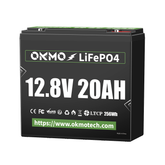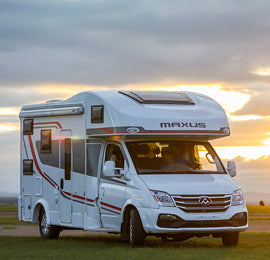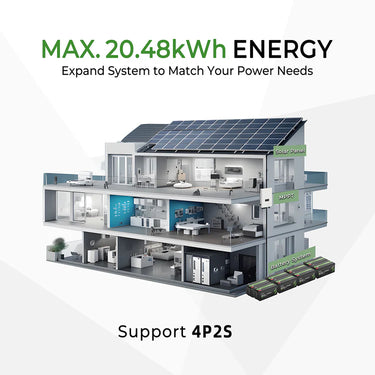Lithium Ion Battery Recycling Near Me
As lithium-ion (Li-ion) batteries become ever more common — from laptops and scooters to EVs and energy storage banks — the question becomes: how and where can I responsibly recycle them? This article will guide you through why recycling matters, how to find nearby drop-off points, and highlight key state-by-state recycling resources across the U.S.
1. Why recycling lithium-ion batteries is important
Lithium-ion batteries contain valuable and potentially hazardous materials. According to the United States Environmental Protection Agency (EPA), recycling these batteries helps conserve critical minerals, reduce landfill fire risk and support a sustainable battery supply chain.
For example:
-
Improper disposal of lithium-ion batteries in household trash or curbside bins has caused fires at recycling facilities.
-
Recycling recovers lithium, cobalt, nickel, copper and aluminum for reuse rather than mining fresh materials.
Therefore, when you’re searching for “lithium ion battery recycling near me”, it’s best to locate a certified drop-off site and follow safe packaging practices (e.g., tape terminals, bag individually).
 2. How to find a drop-off location near you
2. How to find a drop-off location near you
Here are some useful national tools to locate a nearby recycling site:
-
Call2Recycle: A nationwide nonprofit that lists thousands of drop-off locations in stores like The Home Depot, Lowe’s, Staples and others for rechargeable batteries.
-
Earth911 Recycling Search: Enter “lithium-ion batteries” and your ZIP code to find local options.
-
Local municipal hazardous-waste or household-hazardous-waste (HHW) facilities: Many accept lithium-ion batteries for free drop off. For example, in Fort Collins, Colorado, there are specified drop-off points.
Tip: Always check whether the site accepts lithium-ion batteries (sometimes only small rechargeable cells) and follow any packaging instructions such as taping the + terminal.
3. U.S. State-by-State Sample Drop-Off Resources
Below are examples for several states to give you starting points — for full coverage, use the search tools above.
| State | Example Drop-Off Resource | Notes |
|---|---|---|
| California | Use Call2Recycle at major retailers or mail-in programs from Redwood Materials in Nevada. | High volumes of discarded Li-ion in CA |
| New York | New York State Department of Environmental Conservation (NYSDEC) lists drop-off sites via Call2Recycle or HHW facilities. | Rechargeable battery law covers Li-ion |
| Colorado | City of Fort Collins HHW drop-off accepts lithium-ion batteries (tape terminals). | Good example of municipal acceptance |
| Nevada | Home to recycling plant by Redwood Materials; for consumer drop-off check national tools. | Recycling industry hub |
| Massachusetts | Ascend Elements’ large recycling plant in Covington, GA; for MA check local hazardous-waste facilities. |
These examples underscore that every state has options, but you’ll often find easiest access via the national databases rather than a dedicated “li-ion only” storefront.
 4. Safe packaging and preparation
4. Safe packaging and preparation
Before you drop off your lithium-ion battery, follow these guidelines:
-
Tape or cover the battery’s positive (+) terminal with clear or electrical tape to prevent short-circuit.
-
Place individual batteries in a plastic bag or non-metal container if required.
-
Do not place lithium-ion batteries in regular curbside recycling or trash bins — they can ignite when compacted.
-
If battery is large (EV pack, energy-storage module), contact a specialized facility or take to an HHW program; many consumer drop-offs only accept small batteries (<300 Wh).
5. What happens after drop-off?
Once collected, lithium-ion batteries undergo recycling processes including:
-
Discharging and safe handling to prevent fire.
-
Shredding and separation of “black-mass” (active cathode/anode materials), foils, plastics, etc.
-
Recovery of lithium, cobalt, nickel, copper, aluminum via either pyrometallurgical or hydrometallurgical methods.
-
Return of recovered materials to the battery manufacturing supply chain, supporting new batteries and reducing raw-material mining.
These processes highlight why proper disposal matters — you’re helping create a circular economy for battery resources.
 6. Frequently Asked Questions (FAQ)
6. Frequently Asked Questions (FAQ)
Q: Can I just toss lithium-ion batteries in regular recycling bins?
A: No — they pose a fire risk and many recycling facilities refuse them. Use a dedicated drop-off site.
Q: Are EV battery packs accepted at the same drop-off points?
A: Usually not. EV packs are large, heavy and often require logistics and specialized facilities. Use advanced recyclers like Redwood Materials or Ascend Elements for these.
Q: Is there a cost to recycle my battery?
A: Many national programs accept consumer-size lithium-ion batteries for free (via Call2Recycle, retail drop-offs). Always check locally.
Q: Why can’t I just reuse the battery?
A: Some Li-ion batteries are repurposed (e.g., second-life energy storage) but eventually they must be recycled. The federal DOE-supported ReCell Center researches reuse and recycling technologies.
 7. Final thoughts and next steps
7. Final thoughts and next steps
When you search “lithium ion battery recycling near me”, you’re taking an important step for safety and sustainability. Here’s a quick checklist:
-
Use Call2Recycle or Earth911 to locate a certified drop-off site in your ZIP.
-
Package the batteries safely (tape terminals, bag).
-
Drop off at the location — retail store, HHW facility, or mail-in program.
-
For large battery modules (EV or storage), contact a specialized recycler.
-
Encourage friends and family — recycling lithium-ion batteries helps protect people, property and the environment.
By disposing of lithium-ion batteries properly, you help recover valuable materials, reduce landfill fire risk, and contribute to a cleaner energy future.









